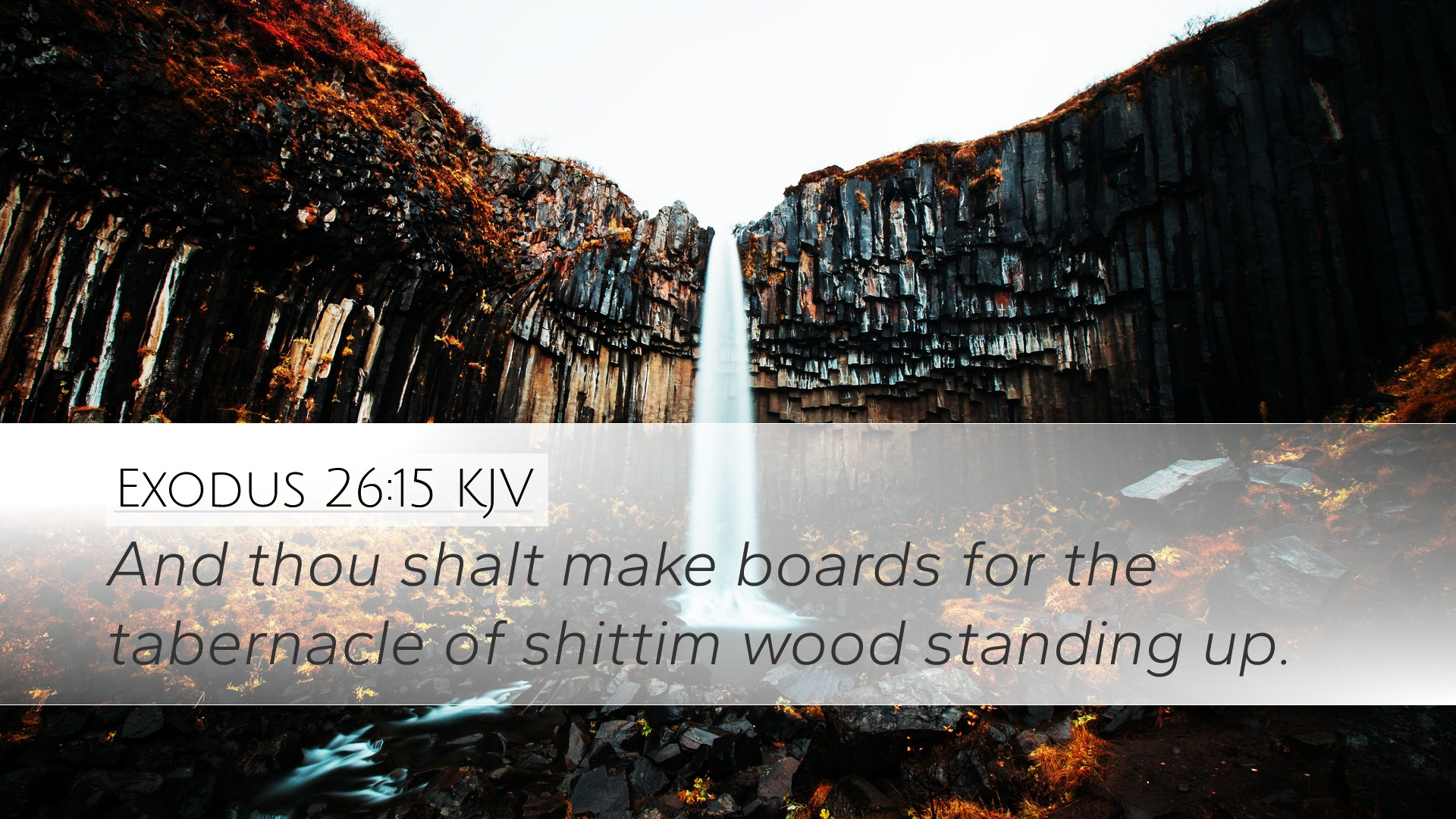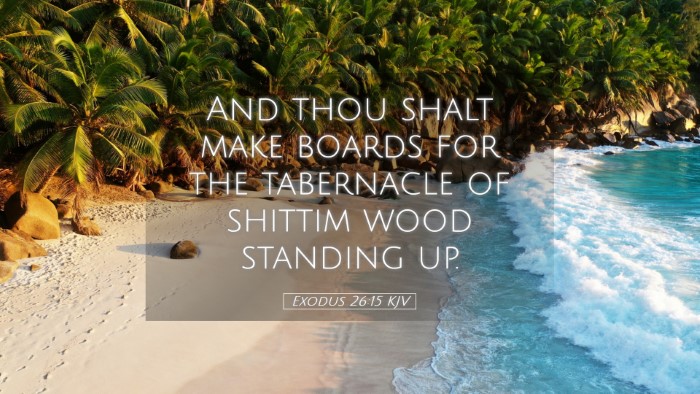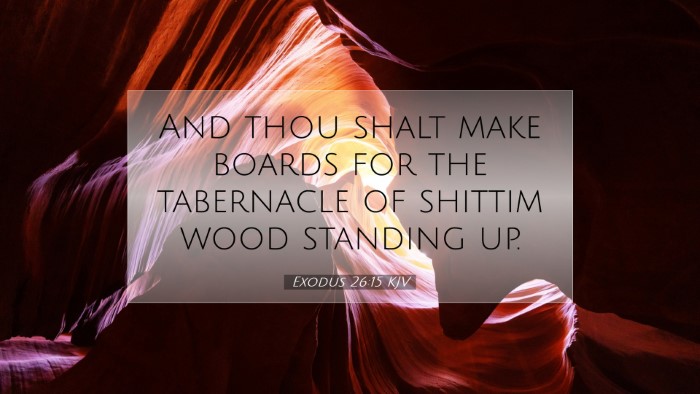Commentary on Exodus 26:15
Verse: Exodus 26:15 - "And thou shalt make the boards for the tabernacle of shittim wood standing up."
Introduction
This verse is a part of the detailed instructions given by God to Moses regarding the construction of the Tabernacle. The Tabernacle served as a centerpiece for worship and a dwelling place for God's presence among His people. Understanding the significance of the materials and structure specified in Exodus 26:15 helps in gaining insight into the spiritual symbolism and physical representation of God's covenant with Israel.
Material Consideration
The mention of "shittim wood" (or "acacia wood") in this verse carries significant importance. According to Matthew Henry, this wood is noted for its durability and resistance to decay. Thus, it symbolizes God’s enduring faithfulness and the permanence of His covenant with His people.
Insights:
- Durability: The choice of shittim wood reflects the strength and stability of God's presence.
- Cleansing and Purity: Unlike other woods, shittim does not rot quickly, reminding believers of the call to maintain purity.
Construction Details
The structure of the boards, as specified, presents a vertical arrangement, which signifies uprightness and strength. According to Albert Barnes, the boards were to be "standing up," which can be seen as a metaphor for the moral and spiritual uprightness expected from God's people.
Key Points:
- The vertical positioning of the boards represents the alignment of believers' lives with God’s will.
- Each board could symbolize individual believers standing firm in faith — a community of faith collectively reflecting God's glory.
Theological Implications
This construction mandate holds theological significance beyond its physical application. Adam Clarke emphasizes the theological parallel of the Tabernacle as a representation of Christ and the Church. The boards, standing firm, echo the essential nature of Jesus as the cornerstone of faith.
Theological Themes:
- The Unity of the Church: Just as the boards fit together to form the structure, believers are called to unity in Christ.
- The Holiness of God: The Tabernacle’s construction signifies that God dwells among His people, calling them to a higher standard of holiness.
Application for Believers
For pastors and church leaders, this verse serves as a reminder of the foundational truth that God has established a dwelling place among His people and desires for them to be a reflection of His holiness. The admonition to stand upright can apply to both personal and corporate contexts within the church.
Practical Applications:
- Encourage congregants to embrace their identity as living stones in the spiritual house of God.
- Promote teaching on the importance of remaining steadfast and rooted in scriptural truth.
Conclusion
Exodus 26:15 serves as more than a mere architectural detail; it encapsulates God’s intention for His people to live in accordance with His divine standards. The use of shittim wood in upright boards symbolizes strength, purity, and the unity of believers. As pastors, theologians, and students engage with this text, it invites deeper contemplation of the holiness of God and the privilege of His presence among us.


